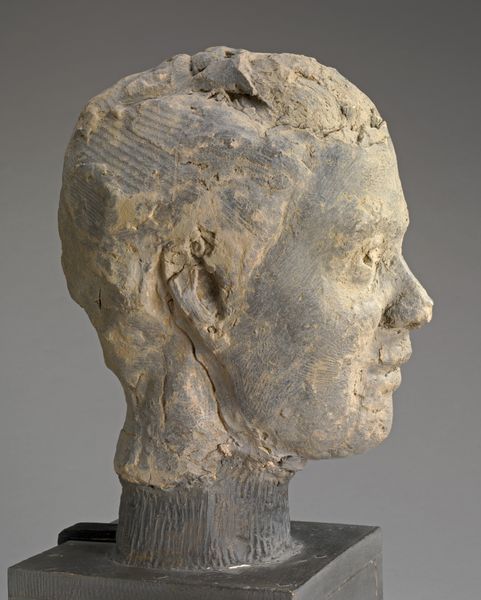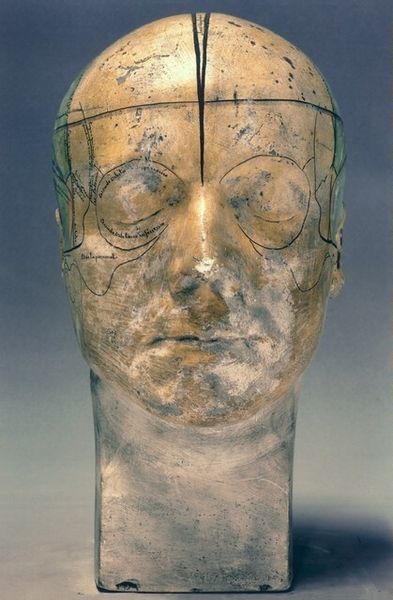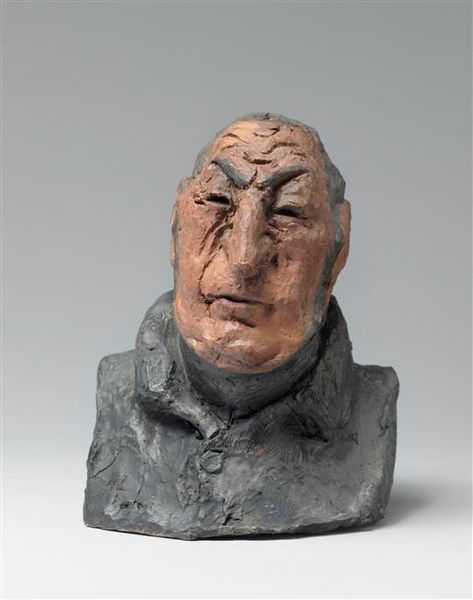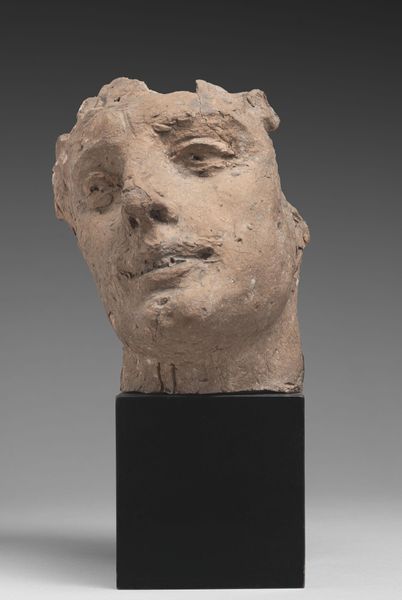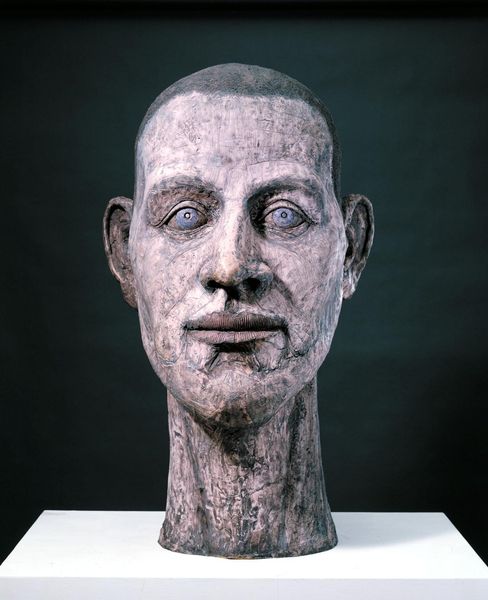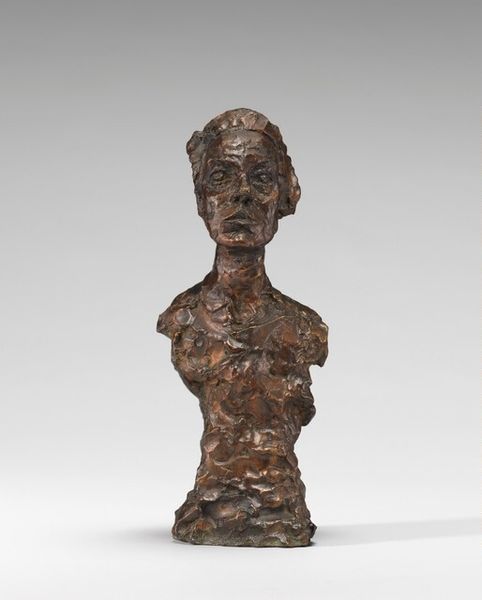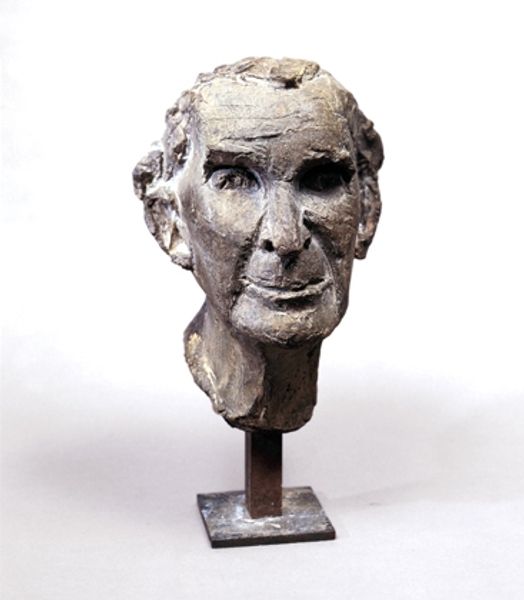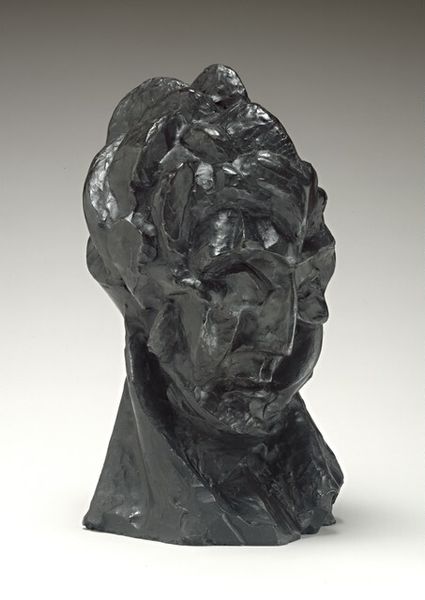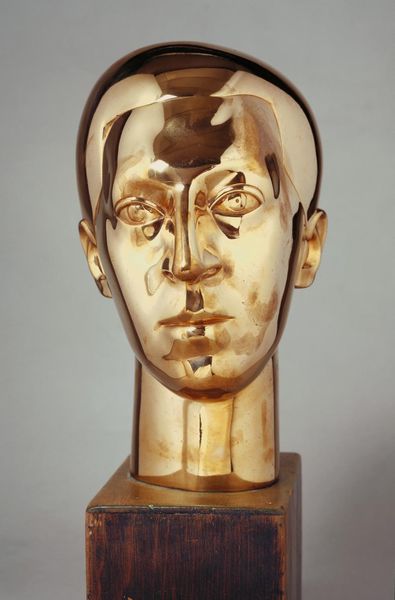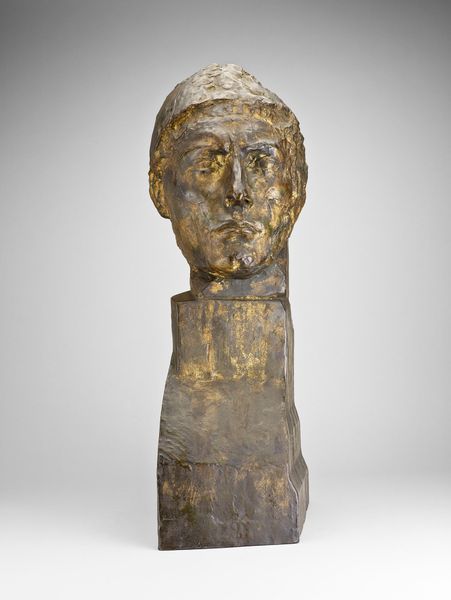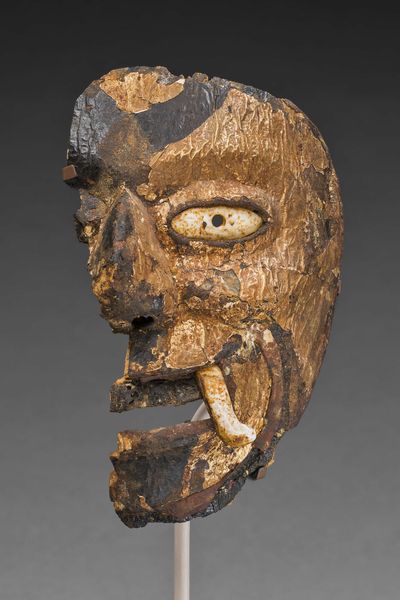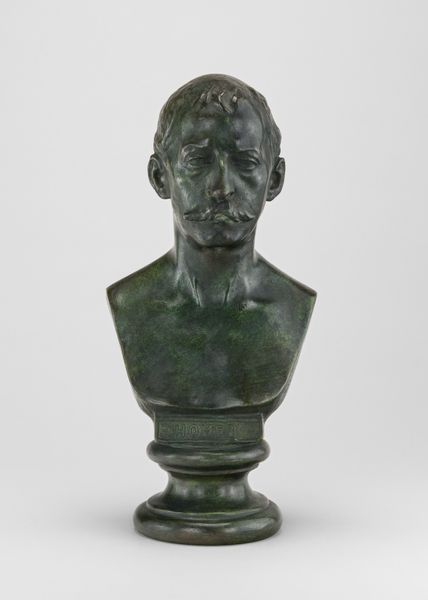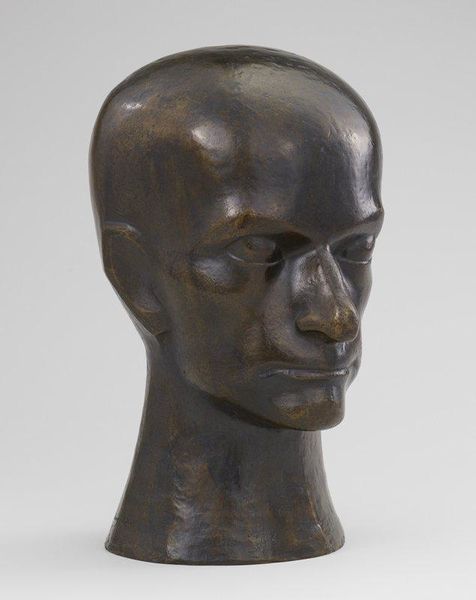
bronze, sculpture
#
sculpture
#
bronze
#
sculpture
#
realism
Dimensions: height 32.5 cm, height 53 cm, width 18 cm, depth 22 cm, weight 26 kg
Copyright: Rijks Museum: Open Domain
Editor: Here we have a bronze sculpture, a portrait bust created in 1975 by Arthur Spronken, titled "Arthur van Schendel (1910-1979)". I’m struck by how it seems to capture a certain gravity, almost melancholy. What do you see in this piece, considering its context? Curator: I'm drawn to the weight this image carries. It transcends simple representation; it's about cultural memory. Bronze itself is significant – an enduring medium, historically linked to commemorating important figures. Consider the wrinkles etched on the face. Are these mere details or are they symbolic of a life lived, experiences endured? Do you get a sense of familiarity, perhaps of a wise uncle? Editor: I do. It’s almost like the sculpture seeks to portray not just physical likeness, but something deeper, like the essence of the subject's character. He looks almost pensive. Do you think the choice of realism contributes to that? Curator: Absolutely. Realism, here, anchors the image to lived experience. It invites empathy. Yet, even in realism, there's an element of idealization or interpretation. Think about how this image functions. Does it present van Schendel as a figure of authority, intellectual depth, or perhaps even vulnerability? Editor: I see all of those things now. I hadn’t considered the bronze as contributing to this perception of authority, or even immortality, really. Curator: And isn’t it fascinating how a static image, sculpted in bronze, can evoke such dynamic emotional responses and historical reflections? It almost allows a connection beyond the ages. Editor: Definitely, and that's something to remember as we look at more artworks. Thanks for the insight!
Comments
No comments
Be the first to comment and join the conversation on the ultimate creative platform.
